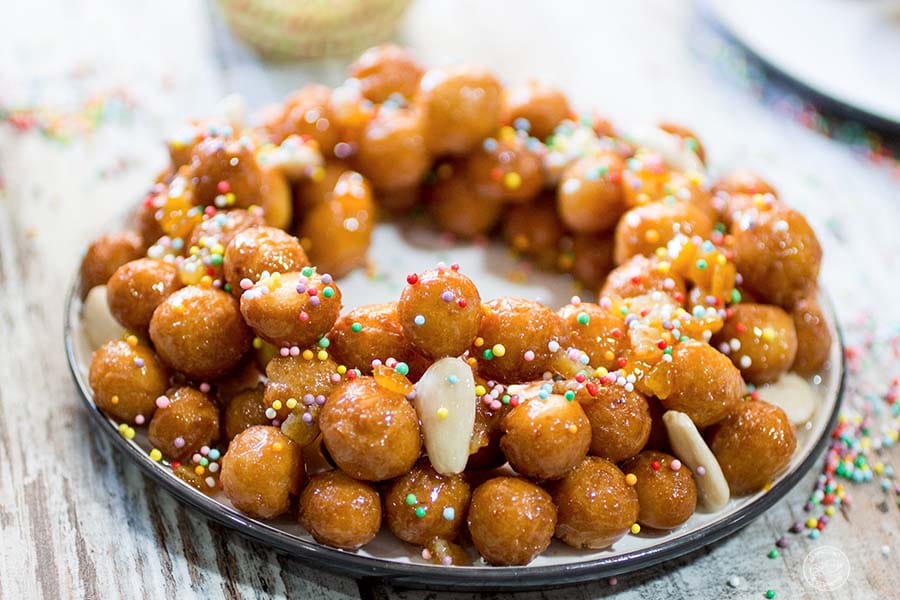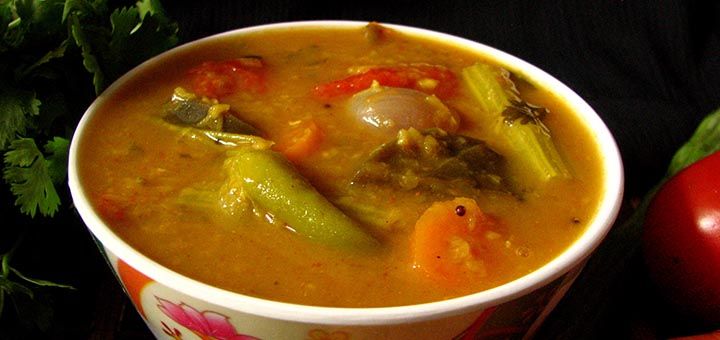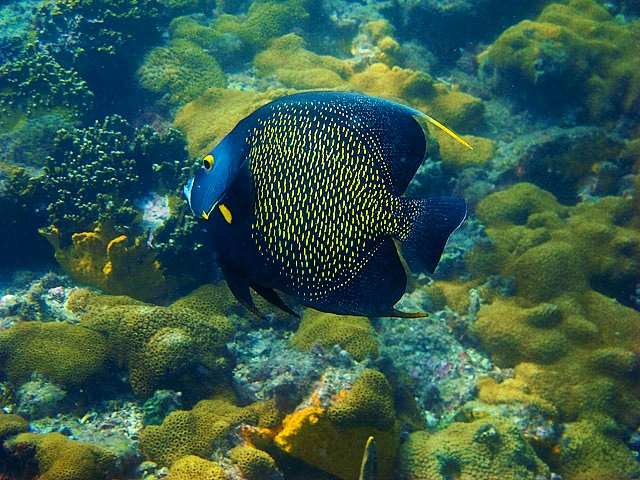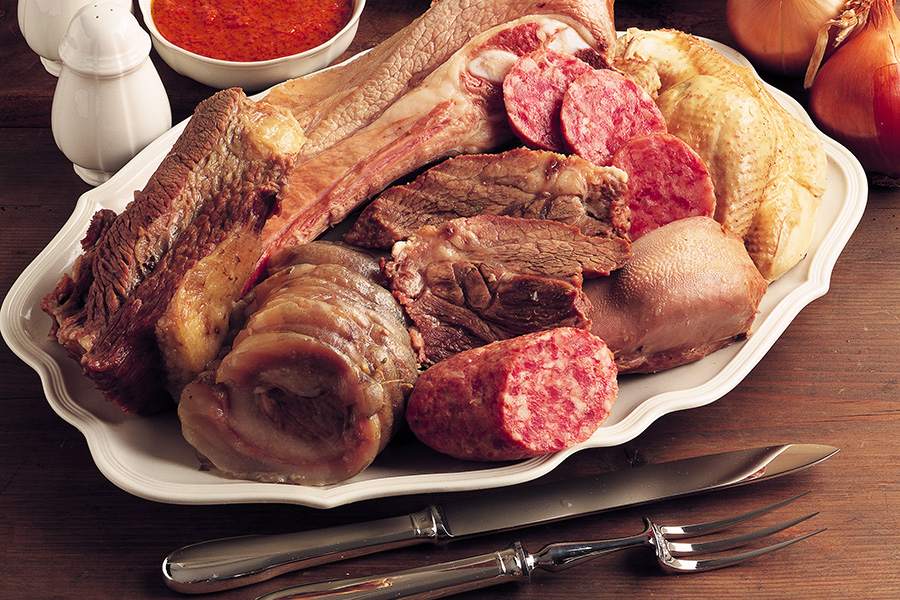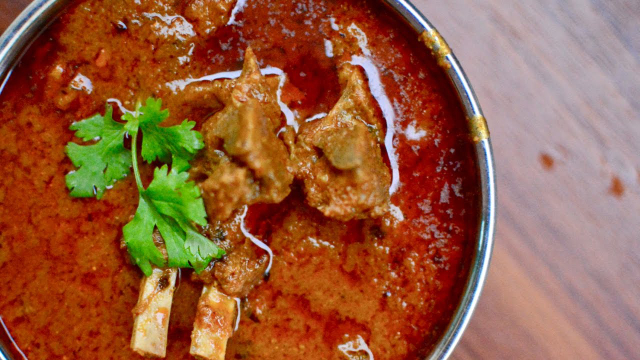“Cicerchiata” is a traditional pastry, with several recipe variations, not only in the ingredients but also in the preparation and the shape. This confectionery is extremely popular in Abruzzo, especially in the Sangro area, where the beekeeping sector is successful and produces some top quality honey. The pastry is made up of tiny balls of fried dough (called “cicerchie” as they resemble grass-peas), “glued” together with honey.
For the paste, a well of 240g of superfine flour is made on a work surface, then two eggs are cracked into it with two spoons of extra virgin olive oil, 20g of sugar and a spoonful of dry white wine. The mixture must be kneaded briskly to make a smooth, quite firm paste and this is left to rest for a while. Small amounts of dough are rolled into snakes the size of a pencil and then cut to make small lumps, rolled into balls.
The balls of dough are deep-fried in olive oil, drained and set to one side. In another pan, 100g of honey is caramelised with 100g of sugar and a spoonful of extra virgin olive oil.
As soon as this caramel turns golden in colour, the previously prepared balls of dough are added and stirred quickly with a wooden spoon, mixing well. The mixture obtained is then tipped onto a serving dish and is modelled manually to the required shape, by a cook who has first dipped hands in cold water. Usually the confectionery is shaped into a ring but some prefer to make round, single portions. Often the surface is garnished with toasted and chopped almonds, or hundreds and thousands, reminiscent of the fun and humour of Carnival time. When sliced, the brittle, delicate nature of the yellow “cicerchie” emerges and the sweet scent of honey is evident. Over the years, some ingredients in the recipe have been modified, for example the addition of candied fruit and almonds.
